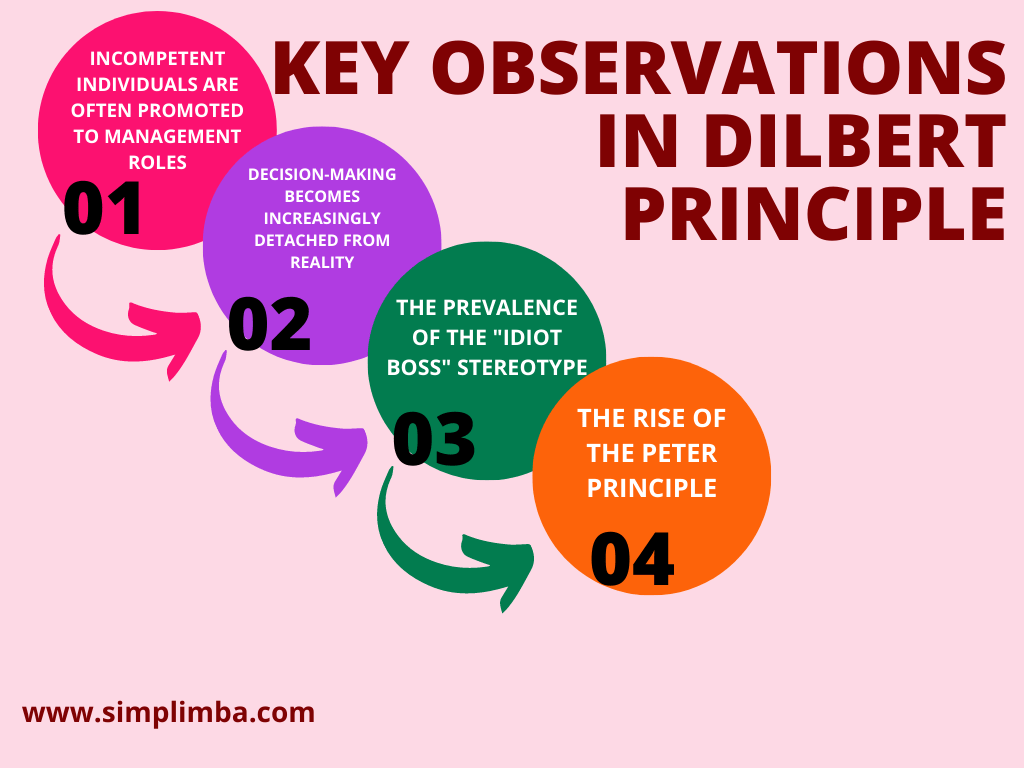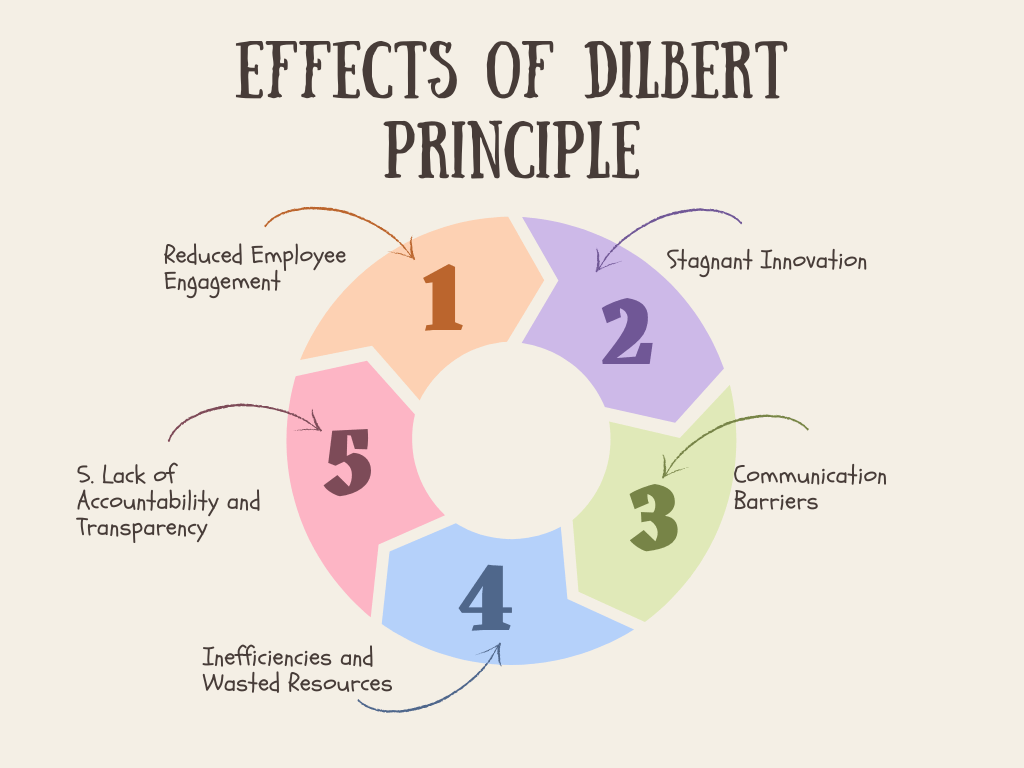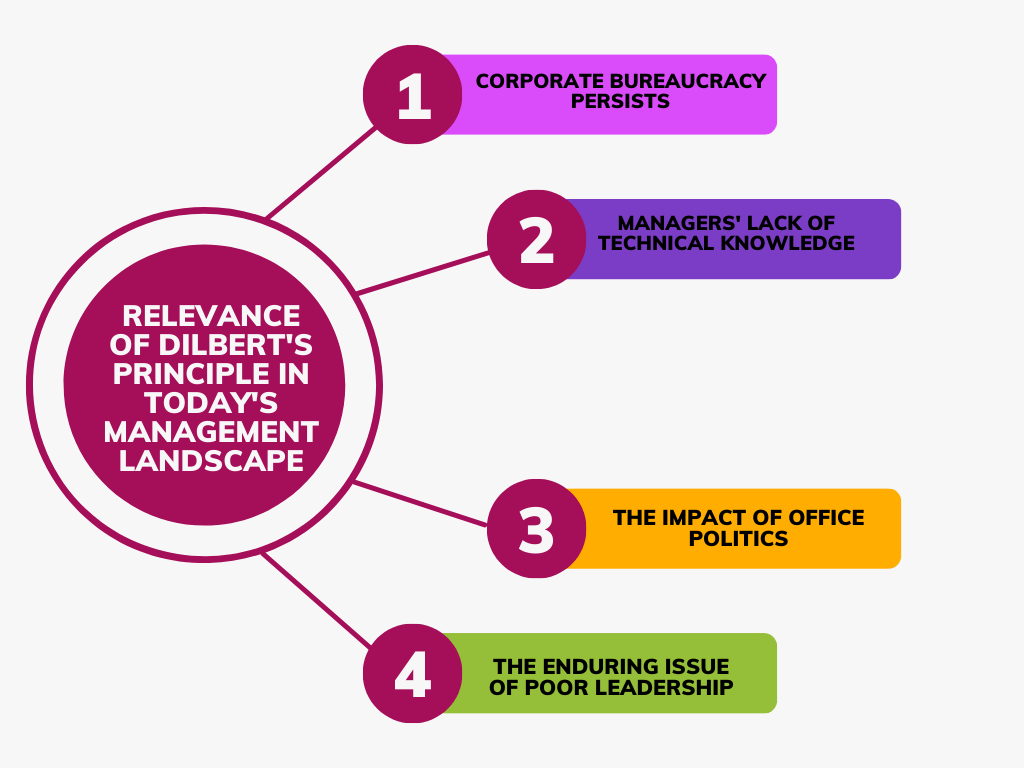Introduction: The Dilbert Principle
Dilbert Principle: In the realm of office management, few satirical comics have achieved the level of cultural resonance as Scott Adams’ “Dilbert.” Created in 1989, “Dilbert” cleverly and hilariously depicts the absurdities, frustrations, and quirks of corporate life. Among the many amusing insights it offers, the Dilbert Principle stands out as a captivating concept that shines a satirical light on management practices. In this blog, we will delve into the Dilbert Principle, discuss its origins, explore its key observations, and analyze its relevance in today’s management landscape.
Origins of the Dilbert Principle
The Dilbert Principle, named after the comic strip itself, was first introduced by Scott Adams in his book of the same name, published in 1996. Adams humorously describes the principle as “the most ineffective workers are systematically moved to the place where they can do the least damage: management.”
Key Observations in Dilbert Principle

1. Incompetent individuals are often promoted to management roles:
One of the core premises of the Dilbert Principle is that people who lack the necessary skills to excel in their current roles are frequently rewarded with promotions to managerial positions. Adams humorously explains this phenomenon as the “confusion of promotion with competence.”
2. Decision-making becomes increasingly detached from reality:
The comic strip regularly highlights how management decisions, driven by unnecessary bureaucracy and politics, often have little connection to the actual needs and concerns of employees. Adams exposes the absurdity of executives making questionable decisions with limited knowledge or understanding of their employees’ work.
3. The prevalence of the “idiot boss” stereotype:
The Dilbert Principle emphasizes the all-too-common scenario of employees being saddled with clueless and inept managers. These managers lack the technical expertise, communication skills, and leadership abilities required to effectively guide and support their teams.
4. The rise of the Peter Principle:
Adams also touches upon the Peter Principle, which states that individuals are promoted to their highest level of incompetence. The Dilbert Principle humorously expands on this concept, suggesting that even in managerial positions, employees may still continue to be promoted despite their incompetence.
Effects of Dilbert Principle

1. Reduced Employee Engagement:
The Dilbert Principle posits that incompetent employees are more likely to be promoted to managerial positions, creating a paradoxical situation where the least qualified individuals are making crucial decisions. Consequently, this leads to a decline in employee morale and engagement as talented workers become frustrated by the lack of recognition and reward for their efforts.
2. Stagnant Innovation:
Under the Dilbert Principle, bureaucratic structures often prioritize maintaining the status quo rather than embracing new ideas or innovative practices. As a result, organizations fail to adapt to changing market dynamics and miss out on opportunities to grow and thrive. This stifling environment hampers creativity and limits the potential for breakthrough innovations.
3. Communication Barriers:
Bureaucracy typically leads to a complex chain of command, with multiple layers of management separating the top decision-makers from frontline employees. The Dilbert Principle highlights the adverse effects of such hierarchical structures on communication. Critical information often gets lost or distorted as it passes through multiple layers, leading to miscommunication, delays, and misunderstandings.
4. Inefficiencies and Wasted Resources:
Inefficient decision-making processes are a hallmark of the Dilbert Principle. The notion that incompetent employees rise to management positions means that essential organizational resources are often misallocated. Inefficient practices, redundant tasks, and unnecessary bureaucracy drain time, effort, and financial resources that could have been better utilized in pursuing more value-adding activities.
5. Lack of Accountability and Transparency:
The Dilbert Principle often results in a lack of accountability within organizations. Incompetent managers may resort to blame-shifting or hiding behind bureaucratic processes when faced with challenges or failures. This absence of accountability erodes trust among team members, leading to decreased collaboration and hindered problem-solving capabilities.
Relevance of Dilbert’s Principle in Today’s Management Landscape
While the Dilbert Principle originated over two decades ago, its observations and satirical commentary remain highly relevant in today’s corporate landscape. Here are a few reasons why:

1. Corporate bureaucracy persists:
Despite advances in technology and the rise of agile working, many companies still struggle with excessive red tape and bureaucratic processes. The Dilbert Principle captures the frustration employees experience when dealing with unnecessary hurdles and pointless paperwork.
2. Managers’ lack of technical knowledge:
The comic strip’s portrayal of managers who lack the technical expertise required to understand and support their teams is a common struggle in organizations today. This insight highlights a critical gap in management development that needs to be addressed by companies seeking to foster effective leadership.
3. The impact of office politics:
The depiction of office politics in Dilbert serves as a reminder that personal agendas and power struggles can overshadow the pursuit of efficient and effective decision-making. Cultivating a culture of transparency and collaboration can help mitigate the negative consequences of office politics.
4. The enduring issue of poor leadership:
The Dilbert Principle continues to shed light on the repercussions of poor leadership. Incompetent managers can not only hinder individual performance but also negatively impact team dynamics and overall organizational success.
How to Overcome the Dilbert Principle

1. Foster Open Communication and Transparency:
To tackle the Dilbert Principle, it is crucial to establish a culture of open communication and transparency within the organization. Employees should feel comfortable sharing their ideas, concerns, and feedback without fear of reprisal. This can be achieved through regular team meetings, suggestion boxes, or even anonymous feedback channels. By encouraging dialogue, managers can identify areas of improvement and address any underlying issues that contribute to inefficiencies.
2. Set Clear Expectations and Goals:
Creating a framework of clear expectations and goals is essential to overcoming the Dilbert Principle. Employees need a clear understanding of what is expected from them and how their work contributes to the overall objectives of the organization. This clarity helps align individual efforts with organizational goals, promoting a sense of purpose and preventing aimless work.
3. Empower and Delegate:
Micromanagement is a prominent problem in organizations trapped in the Dilbert Principle. Empowering employees and delegating tasks can help address this issue. When employees are given autonomy and ownership over their work, they are more likely to feel motivated and demonstrate greater commitment. Delegation also allows managers to focus on strategic decision-making and higher-level initiatives.
4. Invest in Professional Development:
To overcome the Dilbert Principle, organizations should invest in their employees’ professional development. By providing opportunities for training, workshops, and continuous learning, organizations can enhance employee skills and knowledge. This investment not only improves overall productivity but also fosters a culture of growth and innovation.
5. Recognize and Reward Excellence:
Motivation and recognition play significant roles in overcoming the Dilbert Principle. Managers should acknowledge and reward employees for their exceptional performance, innovative ideas, and contributions to the organization. By establishing a fair and transparent system of recognition and rewards, employees are more likely to feel valued and motivated to excel.
6. Embrace Technology and Process Improvement:
The Dilbert Principle often thrives in organizations with outdated processes and inefficient technology. Embracing modern technologies and continuously improving processes can help streamline operations, eliminate unnecessary bureaucracy, and increase productivity. Regularly assessing and reevaluating existing practices can lead to more efficient workflows and reduced frustration among employees.
Conclusion
The Dilbert Principle, born out of Scott Adams’ iconic comic strip, continues to captivate readers with its sharp humor and insightful commentary on office management. Its observations on promotion, decision-making, and the prevalence of inept managers strike a chord with many employees. Despite its satirical nature, the principle resonates because it reflects aspects of reality within modern workplaces. By acknowledging and addressing the issues highlighted by the Dilbert Principle, organizations can strive for more effective and equitable management practices, ensuring a more productive and fulfilling work environment for everyone involved.
Samrat is a Delhi-based MBA from the Indian Institute of Management. He is a Strategy, AI, and Marketing Enthusiast and passionately writes about core and emerging topics in Management studies. Reach out to his LinkedIn for a discussion or follow his Quora Page

